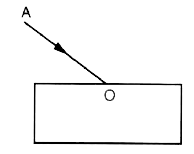In which era did the Himalayas and Alps emerge
(a) Beginning of coenzoic
(b) Middle palaeozoic
(c) Early palaeozoic
(d) Late palaeozoic
Beginning of coenzoic
Middle palaeozoic
Early palaeozoic
Late palaeozoic
The correct Answer is:A
To determine in which era the Himalayas and Alps emerged, we can follow these steps:
1. Understanding the Question: The question asks for the specific era during which the Himalayas and Alps mountain ranges were formed.
2. Identifying Key Information: The Himalayas and Alps are both significant mountain ranges. Their formation is linked to geological processes, particularly plate tectonics.
3. Analyzing the Options:
- (a) Beginning of Cenozoic
- (b) Middle Paleozoic
- (c) Early Paleozoic
- (d) Late Paleozoic
4. Geological Context: The Himalayas were formed due to the collision between the Indian plate and the Eurasian plate. This collision is a significant geological event that led to the uplift of these mountain ranges.
5. Determining the Era: The collision that led to the formation of the Himalayas and Alps occurred at the beginning of the Cenozoic era, which is approximately 66 million years ago. The Paleozoic era, which includes the early, middle, and late periods, occurred much earlier than this.
6. Conclusion: Based on the geological evidence and the timing of the plate tectonics involved, the correct answer is (a) Beginning of Cenozoic.
Final Answer:
(a) Beginning of Cenozoic
- (a) Beginning of Cenozoic
- (b) Middle Paleozoic
- (c) Early Paleozoic
- (d) Late Paleozoic
(a) Beginning of Cenozoic
Topper's Solved these Questions
- HUMAN EVOLUTIONBOOK - DINESH PUBLICATION ENGLISHCHAPTER - HUMAN EVOLUTIONEXERCISE - Check Your Grasp
10 Videos
- GROWTH, REPAIR, REGENERATION AND AGEINGBOOK - DINESH PUBLICATION ENGLISHCHAPTER - GROWTH, REPAIR, REGENERATION AND AGEINGEXERCISE - Brain Teasers-VI[B]
6 Videos
- HUMAN HEALTH AND DISEASEBOOK - DINESH PUBLICATION ENGLISHCHAPTER - HUMAN HEALTH AND DISEASEEXERCISE - CHECK YOUR GRASP
17 Videos
Similar Questions
Knowledge Check
Consider the following statements
(A) Plant cells have centrioles which are absent in almost all animal cells
(B) Ribosomes are the site of protein synthesis
(C) The middle lamella is a layer made of calcium carbonate which holds the different neighbouring cells together
(D) In animal cell, steroidal hormones are synthesised by smooth endoplasmic reticulum
Of the above statementsA(A) and (B) only are correctB(C) and (D) only are correctC(B) and (D) only are correctD(A) and (D) only are correct
Which of the following statement is correct ?
(A) Thorn of Bougainvillea and tendrill of Cucubita show analogy
(B) Homologous organs are pentadactyl organ of man cheetah and whale , they are modified forelimbs
(C) Archaepteryx is modern bird of Mesozoic era
(D) Sweet potato and potato are the example of analogy
View Solution
In the adjacent diagram, AO is a ray of light incident on a rectangular glass slab.
(a) Complete the path of the ray till it emerges out of the slab.
(b) In the diagram, mark the angle of incidence (i) and the angle of refraction (r) at the first interface. how is the refractive index of glass related to the angles i and r ?
(c) Mark angle of emergence by the letter e. how are the angles i and e related ?
(d) Which two rays are parallel to each other ? Name them
(e) Indicate in the diagram the lateral displacement between the emergent ray and the incident ray. state one factor that affects the lateral displacement.
View SolutionRead the following five statements (A -E ) and answer the question.
A. Pollination by water is more common amongst abiotic pollinating agent.
B . Pollination by water is quite rare in flowering plants.
C . Water hyacinth and water lily. The flowers emerge above the level of water and are pollinated by water.
D. Wind pollinated plants numerous flowers packed into an inflorescence.
E. Self incompatibility is an outbreeding device which prevents inbreeding .
How many of the above statement are correct ?
View SolutionWhich of the acts as middle man?
(a) W.B.C.
(b) Plasma
(c) Blood
(d) Lymph
View Solutiona,b,c,d,e are five numbers in which the first three are in A.P and the last three are in H.P .If the three numbers in the middle are in G.P then the numbers at the odd places are in
View SolutionWhich phenomenon occurs when an electric field is applied to a colloidal solution and electrophoresis is prevented?
(a)Reverse osmosis takes place
(b)Electroosmosis takes place
(c)Dispersion medium begins to move
(d)Dispersion medium becomes stationary
View SolutionA disc of radius R is rotating with an angular ω0 about a horizontal axis it is placed on a horizontal table . The coefficient of kinetic friction is μk
(a) what was the velocity of its centre of mass before being brought in contact with a the table ?
(B) what happens to the linear velocity of a point on its rim when placed in contact with the table ?
(c ) what happes to the linear speed of the centre of mass when disc is placed in contact with the table ?
(d) which force is responsible for the effects in (b) and (C ) ?
(e) wht condition should be sattisfied for rolling to begin ?
(f) Calculate the time taken for the rolling to begin .
View Solution
